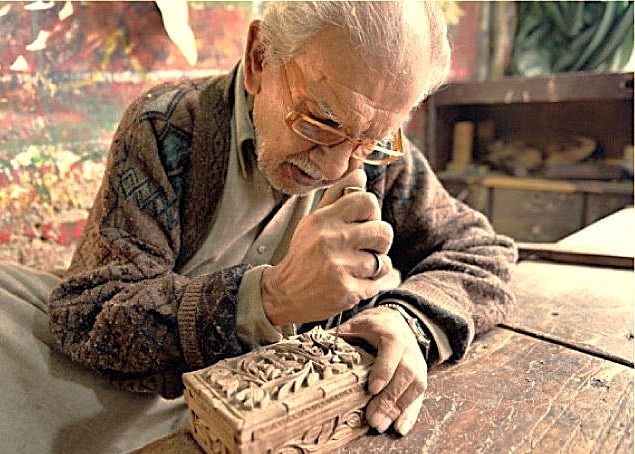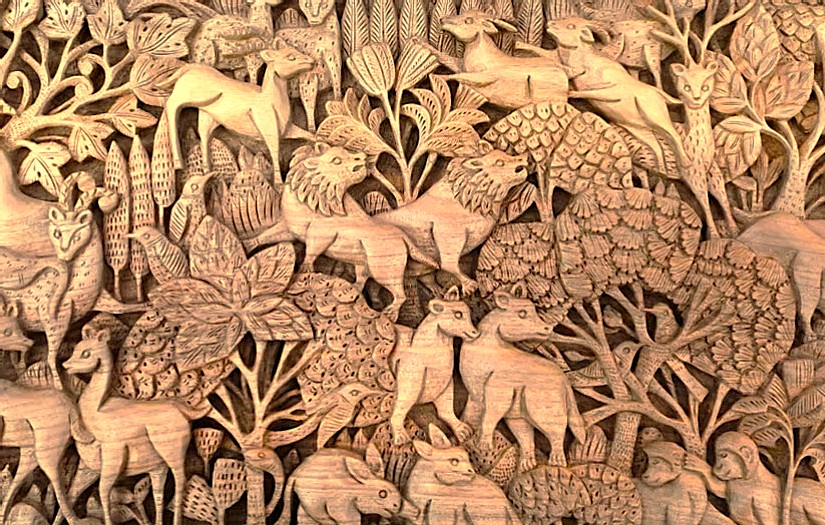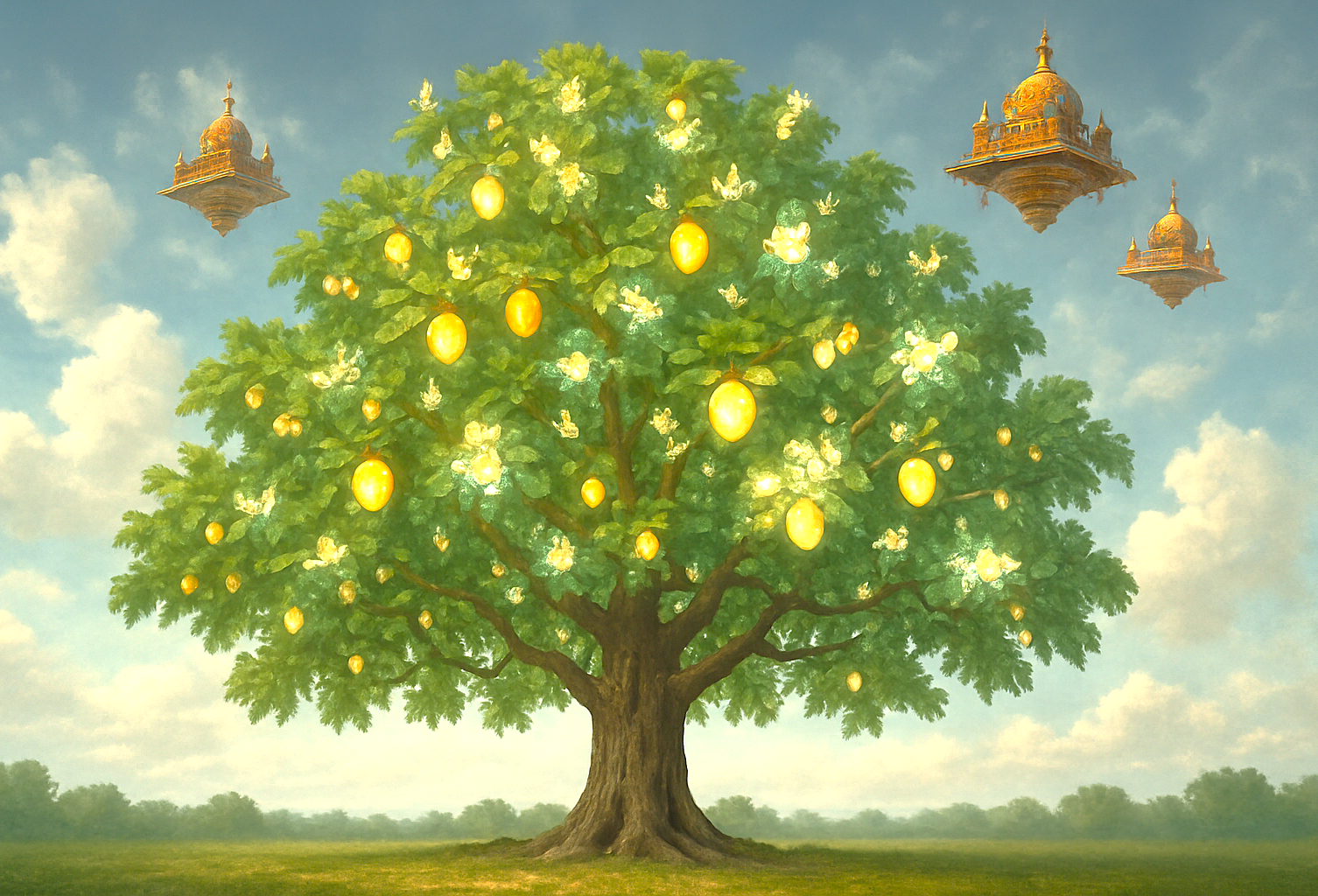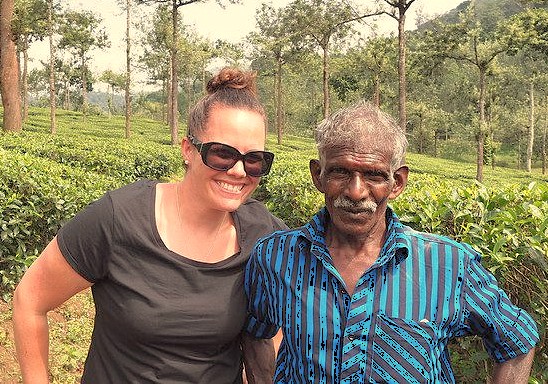Kashmir
Chaku Arts Emporium Srinagar Kashmir
Mother Masala Tours
Walnut Wood Wizardry: Chaku's Master Carvers
Chaku Arts Emporium Srinagar Kashmir. A center of craftsmanship located in the summer capital of Jammu and Kashmir, India. The name "Chaku" refers to a traditional craftsman, grounding the emporium in a long heritage of artistry. Nestled in a region known for its breathtaking landscapes and rich traditions, this emporium serves as a vital link between the past and the present, revealing the timeless traditions of craft that have flourished here for centuries. Dating back to the Mughal Empire, Srinagar became a place for artisans under the patronage of emperors like Akbar, starting in the late 16th century.

Chaku Arts Emporium Srinagar Kashmir: Timeless Artifacts
This emporium houses a diverse collection of handcrafted items that reflect the unique cultural heritage of Kashmir. The artifacts range from Pashmina shawls crafted from the wool of Changthangi goats to intricately designed wooden carvings reminiscent of the regional flora and fauna. Various papier-mâché products further enhance the collection, showcasing the skilled artistry that defines this area. Notably, this emporium is in proximity to the Unesco-recognized Mughal Gardens, which adds another layer of historical context. The gardens, with their symmetric beauty and flowing water features, echo the artistic traditions present in the emporium, providing an immersive experience steeped in history. Each artifact housed here serves as a piece of living history, inviting everyone to appreciate the deep-rooted traditions of craftsmanship that have been preserved through the ages.
Ancient Mosaics: Impeccable Craftsmanship

Craftsmanship in this region has flourished from the inception of Mughal rule, with skilled artisans employing techniques passed down through generations. Artifacts crafted here frequently highlight techniques that originated during the reign of Emperor Akbar in the late 16th century, where the combination of Persian influence and local artistry took root. For instance, the art of Pashmina weaving requires meticulous attention to detail, often taking weeks to finish a single shawl. The artisans, known for their expertise and commitment, utilize handlooms, imbuing each with intricate patterns and designs.
The Pulse of the Local Community
Chaku Arts Emporium Srinagar Kashmir. The locals in the area are known for their hospitality and commitment to preserving their rich heritage. They take great pride in their crafts and are eager to share their knowledge with anyone interested. Both artisans and residents participate in maintaining the legacy of traditional crafts through workshops and community events. The unique qualities of the locals lie not only in their artistic prowess but also in their ingrained values of hospitality and community. You will find that they are ready to engage with anyone who shows interest in their work, offering insights and fostering a deep understanding of the cultural nuances that define this place.
Capturing the Magic: A Photographic Haven

Chuku Arts displays an extensive collection of walnut wood art created through traditional carving techniques by skilled local craftspeople. Photography enthusiasts find numerous opportunities to capture detailed images of intricate patterns on decorative screens, furniture pieces, and smaller gift items throughout the space. The natural wood grain creates interesting textures that appear differently depending on lighting conditions and camera angles. Cameras with macro capabilities work well for precise details of geometric designs.
Festivals of Devotion: Honouring the Sacred and the Divine
Chaku Arts Emporium Srinagar Kashmir. Throughout the year, various festivals illuminate the rich tapestry of Kashmiri culture. One prominent event is Maha Shivratri, typically celebrated in February or March, honoring Shiva, with intricate prayers and rituals. Local communities come together during this two-day festival, where they prepare offerings and conduct ceremonies in temples. Local artisans often create special decorations, enveloping their surroundings in a spirit of reverence. Another celebration is Eid, which marks the end of Ramadan, involving communal prayers, feasting, and the exchange of gifts within families and neighborhoods.
The Connection with the Gods

The rich spiritual heritage of this region is evident in the beliefs surrounding local deities. Sri Amarnath, revered as a manifestation of Shiva, has captured the devotion of many who undertake a pilgrimage to the sacred Amarnath Cave every July and August. The significance of this pilgrimage stems from the belief that Shiva revealed the secret of immortality here. Another figure is Shankara, a 9th-century philosopher credited with the revival of Hindu philosophy in the region. The stories associated with these deities are deeply embedded in the culture and are reflected in the artwork, songs, and daily rituals practiced around the area.
Ancient Technologies: Sacred Sound, Geometry & Astrological Influences
Kashmiri craftsmanship often embraces sacred geometry, utilizing precise patterns that reflect cosmic order. The designs seen in wooden carvings and textile work emanate certain frequencies associated with Solfeggio frequencies. These frequencies, such as 528 Hz (known for transformation and miracles) and 417 Hz (aiding change), resonate with spiritual and physical healing attributes. The materials used in crafting these works play a crucial role; for example, the use of walnut wood is not only aesthetically pleasing but also possesses a warm tonal quality that resonates harmonically. The meticulous design and choice of materials create an immersive experience, where each piece radiates energy that enhances the atmosphere.
Serendipitous Meetings: Beyond the Main Path

Exploring the area surrounding the emporium reveals many unique experiences throughout the neighborhood. Walking lanes leads to small workshops where artisans practice traditional crafts using methods passed down through generations. Wood carving specialists transform raw materials into decorative items through detailed cutting and sanding techniques. Paper craftspeople create intricate designs on various products while explaining their process to anyone watching the demonstration. These workshops function as production spaces and icultural centers where information transfers through casual conversation.
Resilience and Renewal: Overcoming Adversity’s Challenges
Chaku Arts Emporium Srinagar Kashmir. One significant event is the devastating earthquake in 1885, which wrought extensive damage to many structures. This disaster compelled the locals to come together, rebuild, and restore their cultural identity. Another turning point was the 2014 floods, which affected large parts of the Kashmir Valley. The community rallied to rebuild homes and businesses, including the emporium. The spirit of renewal symbolizes the strength of the people as they adapted to losses, forging ahead with determination while preserving their rich heritage.
Urban Legends: Strange Sightings, Myths and Mysteries

Local legends add interesting dimensions to the cultural landscape through stories passed down through generations. The Hidden Artisan appears in many tales as a figure who assists craftspeople when they face challenging projects or creative difficulties. This character emerges from shadows to guide hands during intricate carving or design work according to workshop stories. The Wishing Tree is another legend centered around a large walnut tree, near the shopping area. People visit this tree to make requests by whispering them to the ancient trunk while seated beneath its broad branches.
Pack Your Bags - Your Opportunity for Adventure Starts Now
Join us on an unforgettable journey to explore the rich, living cultural heritage embodied within the Chaku Arts Emporium, a true treasure of Srinagar. We will delve into the intricate artistry of walnut wood carving and papier-mâché, witnessing the age-old techniques that have been passed down through countless generations. You'll have the unique chance to meet the passionate artisans themselves, the masters who breathe life into these materials, and hear the personal stories behind their meticulous craft.
Symphony of Generosity: Offerings from Wanderers to Residents

The interactions between locals and those exploring the area foster a meaningful exchange of ideas and experiences. The artisans gain insights from those who appreciate their work, while visitors receive a deep understanding of the local culture and traditions. This exchange enriches the community, creating an atmosphere of mutual respect and collaboration that is beneficial for everyone involved. With every visit, you will contribute to preserving the heritage and sustenance of traditional crafts, bridging connections that enhance both the environment and the spirit of the place.